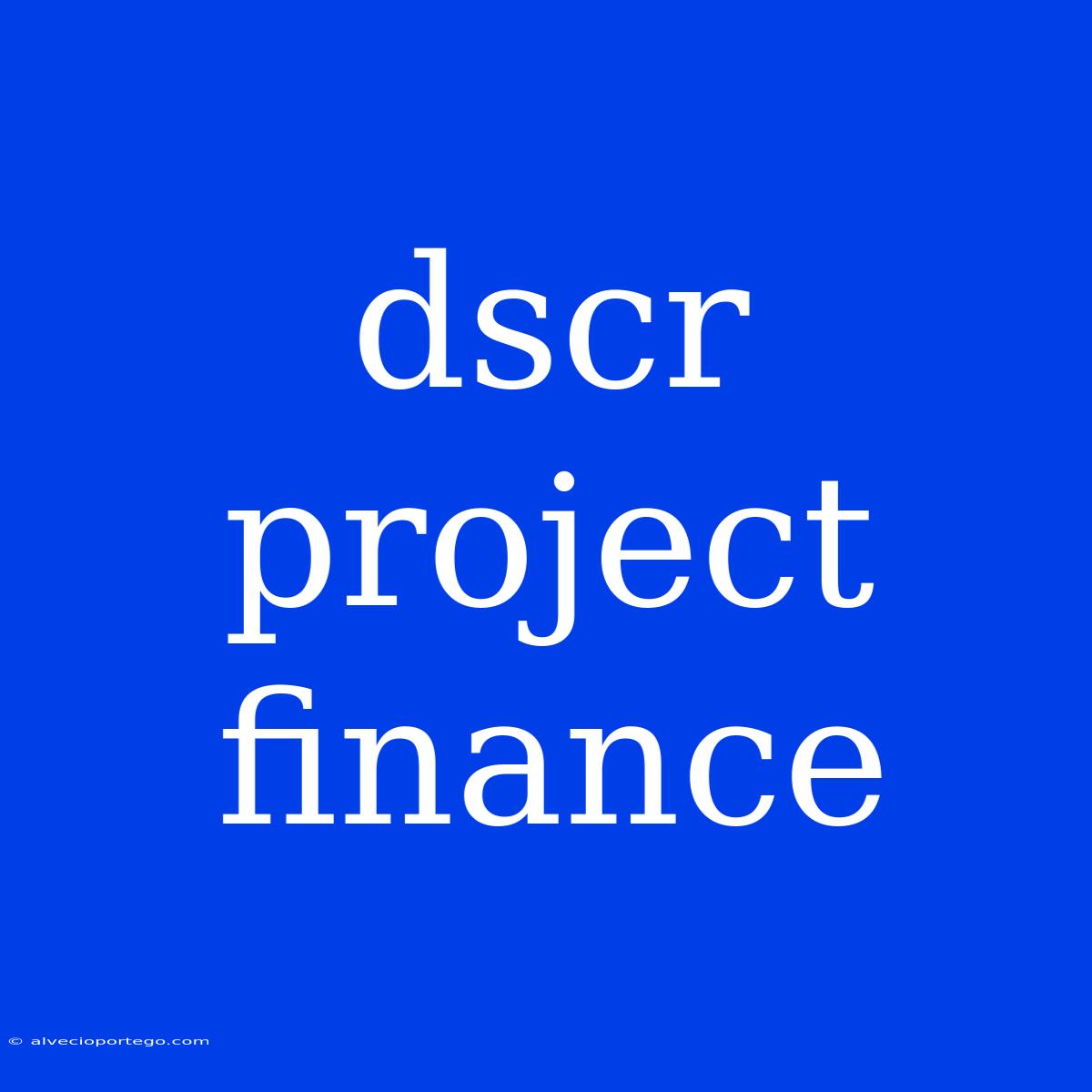Unveiling the Power of DSCR Project Finance: A Deep Dive into This Critical Metric
How does Debt Service Coverage Ratio (DSCR) influence project financing? DSCR is a cornerstone of project finance, determining a project's financial viability by measuring its ability to service debt obligations. Understanding DSCR is crucial for project developers, investors, and lenders alike.
Editor Note: This comprehensive exploration of DSCR in project finance provides insights into its significance and its impact on project development.
Why is this topic important? DSCR plays a critical role in securing project financing. A strong DSCR demonstrates a project's ability to generate sufficient cash flow to cover debt payments, making it more attractive to lenders and investors. It also influences the interest rates and loan terms offered.
Our Analysis: This DSCR project finance guide delves into its definition, calculation, factors influencing DSCR, and its importance in project feasibility analysis. We'll also explore how DSCR impacts financing decisions and project success.
Key DSCR Considerations
| Aspect | Description |
|---|---|
| Definition | DSCR measures the ratio of a project's net operating income to its debt service obligations. |
| Calculation | DSCR = Net Operating Income (NOI) / Debt Service (DS) |
| Factors Influencing DSCR | Revenue projections, operating costs, debt structure, interest rates, project lifecycle |
| Importance | Indicates a project's ability to repay debt and manage financial risk. |
DSCR Project Finance
Introduction: DSCR is a fundamental aspect of project finance, providing lenders with a crucial measure of a project's financial strength and repayment capacity.
Key Aspects:
- Net Operating Income (NOI): Reflects the project's revenue minus operating expenses, representing the cash flow available to cover debt service.
- Debt Service (DS): Encompasses the annual principal and interest payments on the project's debt.
- DSCR Thresholds: Lenders typically set minimum DSCR thresholds based on industry norms, risk profiles, and the project's specific characteristics.
Discussion:
Net Operating Income (NOI):
- Factors influencing NOI: Revenue projections, operating cost assumptions, and potential fluctuations in demand or input prices.
- Example: A power plant project's NOI will depend on factors like electricity tariffs, fuel costs, maintenance expenses, and the plant's efficiency.
Debt Service (DS):
- Impact of debt structure: Loan terms, interest rates, repayment schedule, and the presence of any balloon payments significantly affect the debt service.
- Example: A project with a longer loan term and a lower interest rate will generally have a lower debt service burden compared to a shorter-term loan with higher interest.
DSCR Thresholds:
- Industry benchmarks: Different sectors have varying DSCR expectations based on their risk profiles and typical financial structures.
- Project-specific considerations: Lenders will analyze factors like project maturity, regulatory environment, and the experience of the project team when establishing DSCR requirements.
DSCR and Project Feasibility:
- Project viability: A DSCR exceeding the lender's minimum threshold indicates financial strength and higher likelihood of project success.
- Impact on financing terms: A higher DSCR can translate into more favorable loan terms, such as lower interest rates, longer loan terms, and fewer restrictive covenants.
DSCR and Financing Decisions:
- Lender perspective: A high DSCR reassures lenders about the project's financial health and lowers their perceived risk.
- Investor perspective: DSCR is a crucial metric for investors evaluating a project's financial strength and potential for returns.
DSCR and Project Success:
- Debt repayment: A strong DSCR ensures consistent debt repayment, reducing the risk of default and maintaining financial stability.
- Financial flexibility: A higher DSCR provides more financial flexibility to handle unexpected cost increases or revenue shortfalls.
DSCR in Action: Real-World Examples:
- Infrastructure projects: A toll road project with a consistent volume of traffic and predictable revenue streams would likely have a higher DSCR compared to a renewable energy project reliant on fluctuating energy prices.
- Oil and gas projects: The DSCR for an oil and gas project might be influenced by global oil prices, exploration and production costs, and regulatory changes.
FAQs on DSCR Project Finance
Introduction: This section addresses common questions surrounding DSCR in project finance.
Questions & Answers:
- Q: What is a good DSCR?
- A: A good DSCR depends on factors like industry norms, project risk, and lender preferences. Typically, a DSCR of 1.2 or higher is considered healthy.
- Q: Can DSCR change over a project's life?
- A: Yes, DSCR can fluctuate over a project's life due to changing revenue, expenses, and debt service obligations.
- Q: How can a developer improve a project's DSCR?
- A: By improving efficiency, reducing operating costs, and securing favorable debt financing terms.
- Q: What happens if DSCR falls below the lender's threshold?
- A: The lender might require corrective action, such as renegotiating debt terms or adjusting the project's scope.
- Q: Is DSCR the only financial metric considered in project finance?
- A: No, lenders also consider factors like the project's overall financial structure, debt-to-equity ratio, and the experience of the project team.
Summary: DSCR plays a vital role in evaluating project viability and attracting financing. A strong DSCR indicates a project's ability to generate sufficient cash flow to cover debt obligations, attracting lenders and investors and potentially leading to better financing terms.
Closing Message: Understanding DSCR is essential for project developers, investors, and lenders involved in project finance. By carefully analyzing and managing DSCR, project stakeholders can increase their chances of securing financing, mitigating financial risks, and achieving project success.

